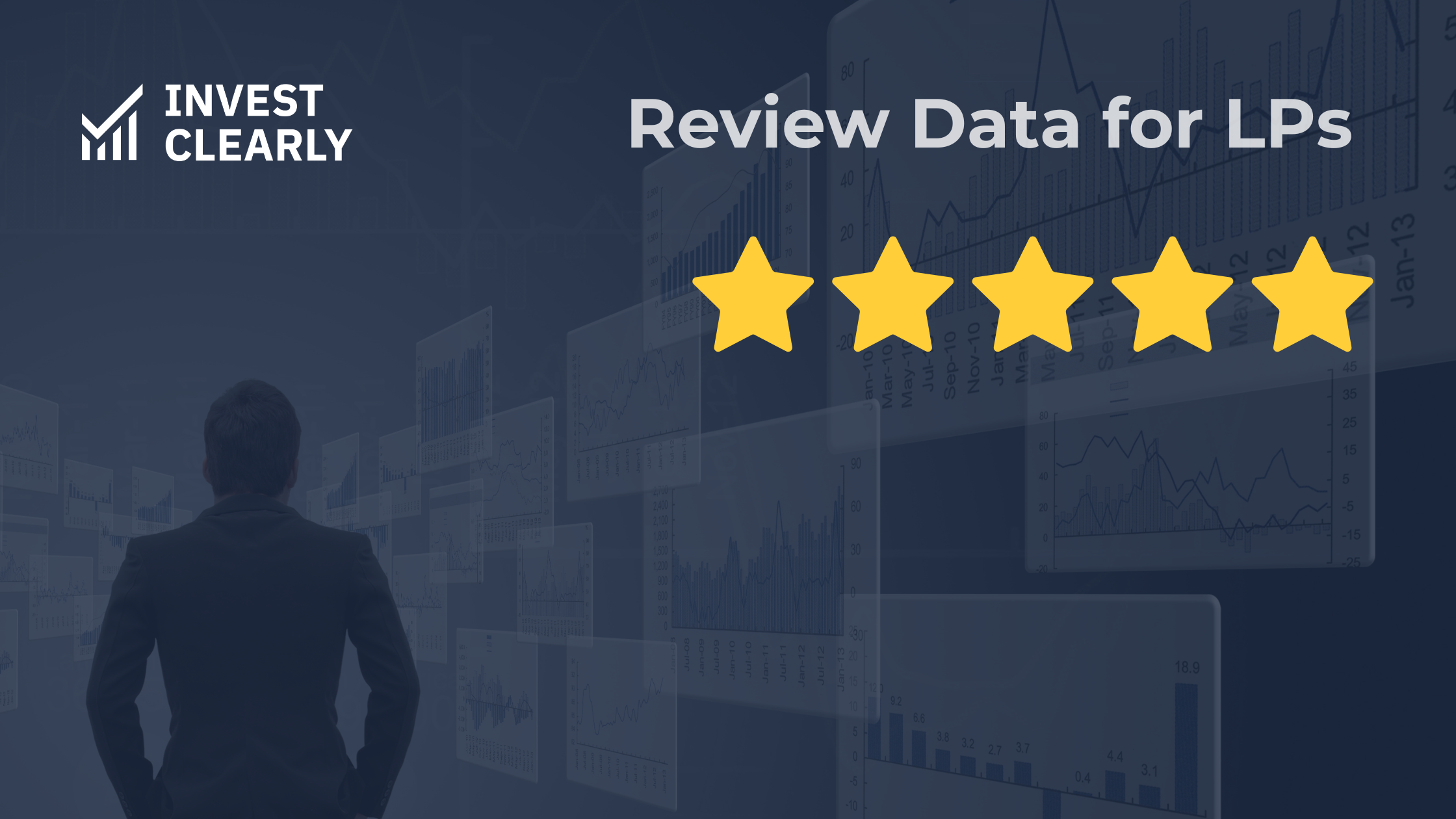
LPs Have Been Slacking on Due Diligence—Here’s How to Step Up Your Game This Year.
Never miss an Invest Clearly Insights article
Subscribe to our newsletter today
The past few years have been a whirlwind for commercial real estate investors. Market volatility, rising interest rates, and unexpected shifts in asset performance have underscored the importance of thorough due diligence. For Limited Partners (LPs), the need to sharpen their evaluation strategies has never been greater. Whether assessing a new sponsor, evaluating a deal, or stress-testing an underwriting model, a refined due diligence approach can help mitigate risk and enhance returns.
Navigating today’s commercial real estate market requires more than just intuition—it demands a strategic, well-informed approach. This article delves into key factors that LPs should analyze to sharpen their due diligence skills and stay informed during an increasingly complex environment.
1. Assess Sponsor Credibility and Track Record
Before committing capital to a deal, LPs should perform rigorous due diligence on the sponsor. A great deal can still fail under poor management, making this step crucial. Here’s how to evaluate credibility:
- Track Record: Review the sponsor’s historical performance, including both successful and underperforming deals. Have they managed properties through economic downturns? A sponsor with a history of navigating challenging markets is more likely to make informed decisions in volatile times.
- Skin in the Game: The best sponsors invest their own money into deals, demonstrating alignment with LPs. If a sponsor has little to no personal investment in the deal, it raises concerns about their confidence in the project and their willingness to assume risk alongside investors. While their investment may not always be in cash, personally guaranteeing loans is another way they can demonstrate their commitment and financial stake in the deal.
- Operational Transparency: The quality and frequency of a sponsor’s reporting are critical indicators of their professionalism. A good sponsor maintains transparency during both good times and bad, ensuring that LPs are informed about potential risks and challenges as they arise.
*Pro Tip: Ask for a sample or two of their previous reports to assess their level of detail and consistency in communication.
- Reputation and References: Beyond reviewing documents, seek direct feedback from previous investors, forums, and other industry professionals. Ask about the sponsor’s integrity, communication style, and how they handle challenges. If multiple references cite delayed reporting or poor investor relations, that’s a red flag.
- Experience in the Asset Class: A sponsor with a strong track record in self-storage real estate may not be as effective when transitioning into multifamily or industrial assets. Ensure that their expertise matches the type of asset they are managing. However, it's okay for a sponsor to invest across multiple asset classes, as long as they have the right experience, team, and operational infrastructure to manage the unique challenges and nuances of each asset type effectively.
2. Evaluate Market Fundamentals with Fresh Data
Market conditions have fluctuated significantly, making it critical for LPs to rely on updated market data rather than outdated assumptions. Key factors to assess include:
Local Employment and Population Growth: Are key demand drivers strengthening or weakening? A growing job market and an influx of new residents typically indicate strong demand for real estate, while job losses or population declines can signal potential challenges.
- Rental Trends and Vacancy Rates: Are rents sustainable, and how do vacancy trends compare to pre-pandemic norms? Understanding these trends will help determine if rental rates are inflated or backed by solid demand fundamentals. Additionally, vacancy rates provide insight into market saturation. It's important to analyze these factors to assess the long-term viability of a market.
- New Supply and Competition: What’s in the development pipeline, and how might it impact existing assets? If an area is experiencing a flood of new developments, it could lead to increased competition, potentially driving down rents and increasing vacancy rates. Also consider the type of new supply—whether it directly competes with the asset in question or serves a different market segment.
- Regulatory and Tax Changes: Are there new policies that could affect property values or cash flow? Changes in zoning laws, rent control measures, and tax policy revisions can significantly impact the viability of an investment. Staying informed on legislative developments at the local, state, and federal levels can help anticipate potential risks.
3. Scrutinize the Underwriting Model
The assumptions sponsors use in underwriting can make or break a deal. Challenge these key metrics:
- Rent Growth Projections: Are assumptions based on historical averages or speculative optimism? Are the projections realistic?
- Exit Cap Rates: Is the cap rate assumption realistic given current debt market trends? Is the exit cap rate the same, or has it been compressed to make the deal appear more attractive? Small changes in cap rate assumptions can significantly impact projected returns, making it one of the easiest and most misleading metrics to manipulate in a financial model.
- Expense Assumptions: Are operating costs, reserves, and capital expenditures accounted for adequately?
- Debt Structure: Is the deal overly reliant on leverage, and are there interest rate hedges in place? Is it floating or fixed-rate debt, and how does that impact the deal’s sensitivity to interest rate fluctuations?
4. Stress-Test the Investment for Downside Scenarios
Given the uncertainty in commercial real estate, LPs should evaluate how a deal performs under adverse conditions:
- What happens if interest rates rise another 100-200 basis points?
- What if occupancy drops 10-15% below projections?
- Can the property still break even if rental growth stagnates?
- Does the debt structure allow flexibility if refinancing conditions tighten?
- If exit strategy options are not provided, consider analyzing two or three different scenarios to assess potential outcomes and mitigate risk.
5. Understand Fee Structures and LP Protections
Sponsor fees and waterfall structures play a crucial role in shaping LP returns, directly affecting overall profitability. Ensure clarity and transparency on:
- Acquisition and Asset Management Fees: Are they reasonable and aligned with market norms?
- Promote and Waterfall Distribution: How does the sponsor participate in profits, and are preferred returns adequately structured?
- Clawback Provisions: If the sponsor earns promote early but fails to meet return thresholds, can funds be clawed back?
- Control and Voting Rights: What governance rights do LPs have, especially in major decisions or recapitalizations? Look for clarity on whether projected return metrics are net of fees, ensuring a true understanding of potential profitability after all costs are accounted for.
6. Review Legal and Structural Protections
Thoroughly understand and review the Private Placement Memorandum (PPM) and Operating Agreement. If any aspects seem unclear or poses potential risks, consulting an attorney is advisable to ensure full comprehension and protection of their investment interests.
- Capital Call Obligations: Are there provisions for unexpected capital calls?
- Liquidity Options: Can LPs exit the investment early, and if so, under what conditions?
- Sponsor Removal Provisions: Are there mechanisms to replace an underperforming sponsor?
Conclusion
In today’s complex real estate environment, LPs must go beyond surface-level analysis to ensure they are investing with the right sponsors, in the right markets, with the right structures. By leveraging data, independent research, and rigorous deal scrutiny, investors can reduce risk and maximize their chances of success.
As commercial real estate investing evolves, so too should investors’ approach to due diligence. The best investors don’t just look at potential returns; they prioritize risk management, sponsor integrity, and market fundamentals. With the right framework, LPs can confidently navigate the opportunities and challenges ahead.
Written by
Lauren is founder of Equity Elevated and a capital raising consultant, helping real estate firms grow and optimize the their capital raising efforts.
Other Articles

Is Private Equity Coming to Your 401(k)?
A new executive order could lead to private markets getting access to 401(k) capital. Learn how a new wave of capital and liquidity demands could affect private real estate.

Investor Experience Index Q3, 2025: LP Takeaways
Discover quarterly insights of how LPs rate their experiences with GPs. Get data-driven questions to use when evaluating GPs.

An Honest Assessment of Feeder Funds
Feeder funds get a bad reputation. The middleman can create drag, opacity, and misaligned incentives. But when done correctly, they’re useful for access and diligence. The problem is, almost nobody uses them correctly in retail real estate investing.

Investor Experience Index Q3 2025: GP Takeaways
The Investor Experience Index provides a quarterly snapshot of how limited partners (LPs) rate their experiences with general partners (GPs). The data for this report is drawn exclusively from verified investor reviews published on Invest Clearly in Q3 2025.

From Interest to Action: A Step-by-Step Guide for First-Time Syndication Investors
Four steps to help new investors invest in syndications confidently and move past decision paralysis.

Single-Tenant Net Leases: A Simple Way to Build Predictable Income
Discover why single-tenant net lease properties offer investors steady income, lower risk, and passive management.